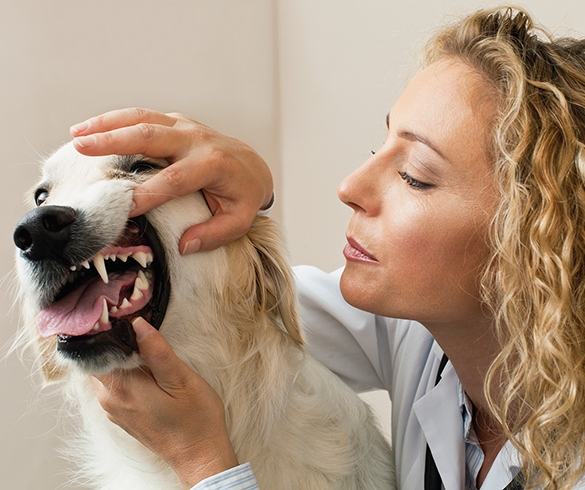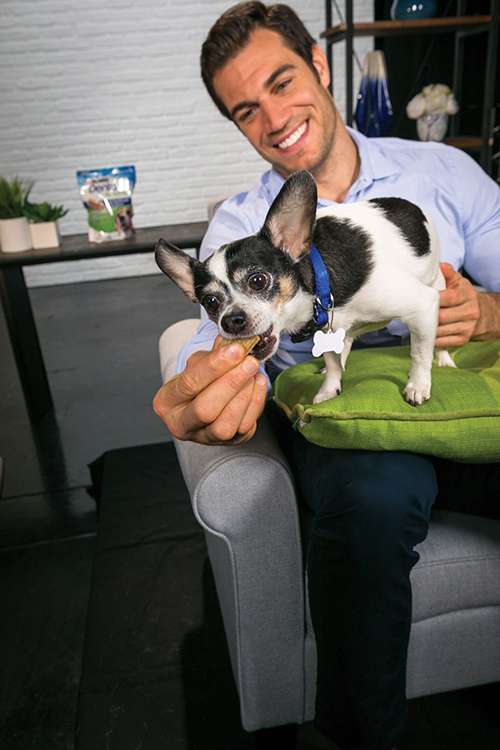
Make Sense of Doggy Dental Care
Dental care for dogs is important, but it’s an aspect of care that is frequently overlooked by dog owners. One of the few outward signs of dental problems lurking just below the surface is bad breath.
According to the American Veterinary Dental College, periodontal disease is the most common clinical dental condition occurring in adult dogs. However, it is preventable with consistent home dental care and regular vet visits.

Knowing there’s a problem with your pet’s mouth starts by understanding what a healthy dog’s mouth should look like. Teeth should be intact (not jagged or broken) and free of plaque and tartar buildup. Tongues should be moist without any lumps or cuts and gums should be salmon pink, though some dogs naturally have black or black and pink gums.
Making sure you are aware of what your pet’s mouth typically looks like and talking to your vet if you spot any issues can go a long way toward protecting your furry friend. Also consider this advice from veterinarian and host of Animal Planet’s “Evan Goes Wild” Dr. Evan Antin to help keep your dog’s teeth healthy and his or her breath fresh:
- See your vet regularly. When visiting your veterinarian for a regular check-up, make sure he or she checks your dog’s teeth. Your vet can evaluate your dog’s mouth, teeth and gums and identify any trouble spots.
- Brushing is best. Ideally, that means brushing your dog’s teeth daily, but that’s not realistic for all dog owners. If you\’re brushing at home, start slow and make sure it’s a positive experience. First, introduce dog-specific toothpaste with your finger and progress to a toothbrush once your pet becomes comfortable. Your vet can also brush your dog’s teeth if you’re having trouble.
- Treat and play with purpose. Functional chews and toys can be both enjoyable for your dog and provide a healthy benefit as easy options to help with dental upkeep.
“Practicing good dental hygiene is just as important for pets as it is for humans,” Antin said, “I recommend DentaLife ActivFresh chews, which are designed with nine ridges and have an active-ingredient blend of honey and natural spirulina that has been scientifically tested to fight bad breath at the source.”
- Use crunchy kibbles. Dry, crunchy foods can be helpful. As your dog chews, particles from the dry food scrape against his or her teeth, acting like a toothbrush to help reduce tartar buildup.
- Watch for warning signs. Persistent bad breath, red gums and changes in behavior or eating habits can all be signs of dental problems. If you notice any of these signs, make an appointment to see your veterinarian.
To learn more about protecting your dog’s dental health, visit purina.com/dentalife and consult with your veterinarian.
Photo courtesy of Getty Images (veterinarian checking dog’s teeth)
Source:
Purina


